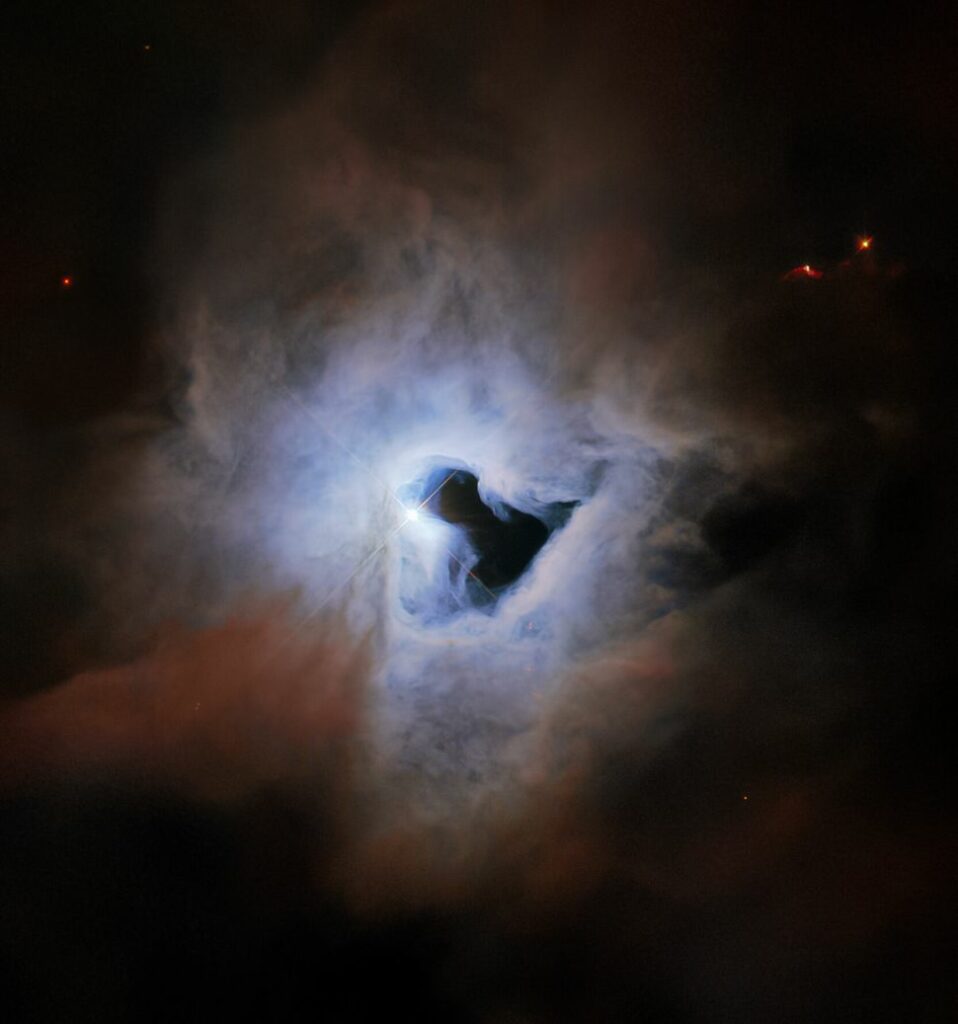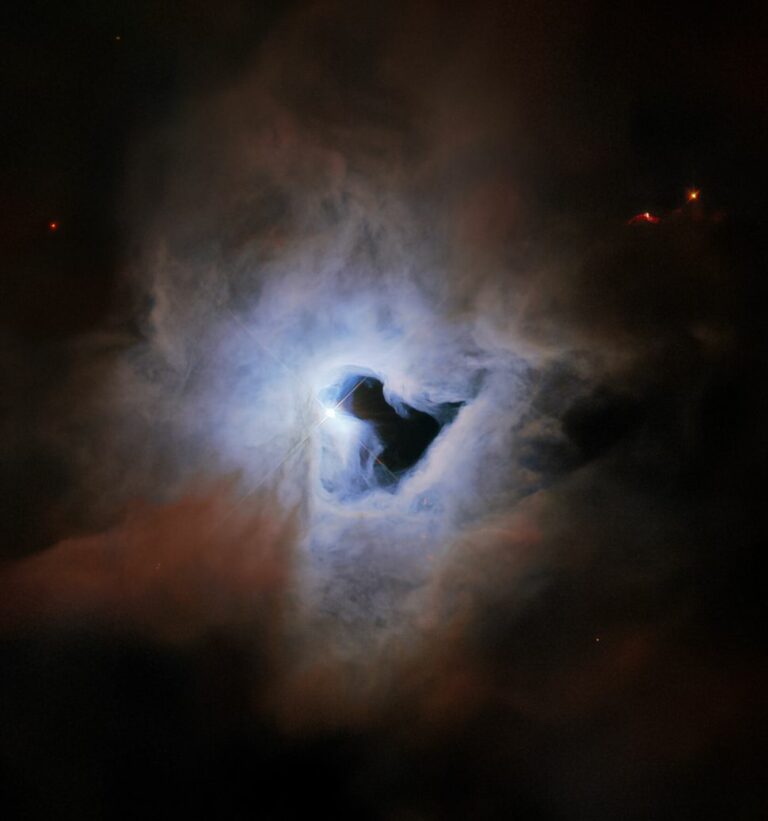A beautiful image shows the Hubble telescope seeing through a “cosmic keyhole.”
Hubble glimpses a mesmerizing nebula in Orion with a very distinctive feature.
It’s unusual to be able to look through a keyhole in the cosmos, yet Hubble managed to do so without even realizing it.
On October 24, NASA and the European Space Agency (ESA) unveiled a new image of the reflection nebula NGC 1999 acquired by the Hubble Space Telescope that depicts a “peculiar portrayal” of the whirling cloud of gas and dust. According to an ESA statement(opens in new tab) that accompanied the photograph, the nebula is a remnant of a star’s development called V380 Orion, which can be seen in the middle of the image.
The keyhole-shaped black emptiness in the center of the nebula is the image’s most recognizable element.
The black middle portion of the nebula was formerly thought to be a “Bok globule,” which are frigid clouds of gas, dust, and other molecules that are so thick that they prevent any light from passing through. The black part turned out to be void space, as discovered by astronomers only after more investigations of the nebula. This keyhole design’s genesis is still unknown.
The nebula is lighted internally by the young star V380 Orion, which formed from the debris left behind from the nebula’s creation. The star is believed to have 3.5 stellar masses and is white in color due to the tremendous heat of its surface, which is around 18,000 degrees Fahrenheit (10,000 degrees Celsius), or twice the temperature of the sun.
The nebula is situated in the Milky Way’s prolific star-forming area, not far from the 1,500 light-year-distance Orion Nebula. According to the space agencies, it is also renowned for being close to the first Herbig-Haro object ever found, which is just beyond the picture frame. (Herbig-Haro objects are ionized gas jets that are fired out from extremely young stars.)

The new image was produced using archived data from Hubble’s Wide Field Planetary Camera 2, which produces the image of the nebula we see using a combination of ultraviolet, visible, and near-infrared sensors. Since Hubble’s other sensors can’t see through the dust clouds to the stars inside or behind the nebula, the infrared sensor is likely the most crucial when studying nebulae.
Since its infrared camera is much more sensitive than Hubble’s and has already unveiled stunning images of famous nebulae like the Pillars of Creation in the Eagle Nebula, infrared light’s ability to pass through clouds of gas and dust makes the James Webb Space Telescope such an important instrument.
Source:SpaceCom
Do not forget to share your opinion with us to provide you with the best posts !




0 Comments